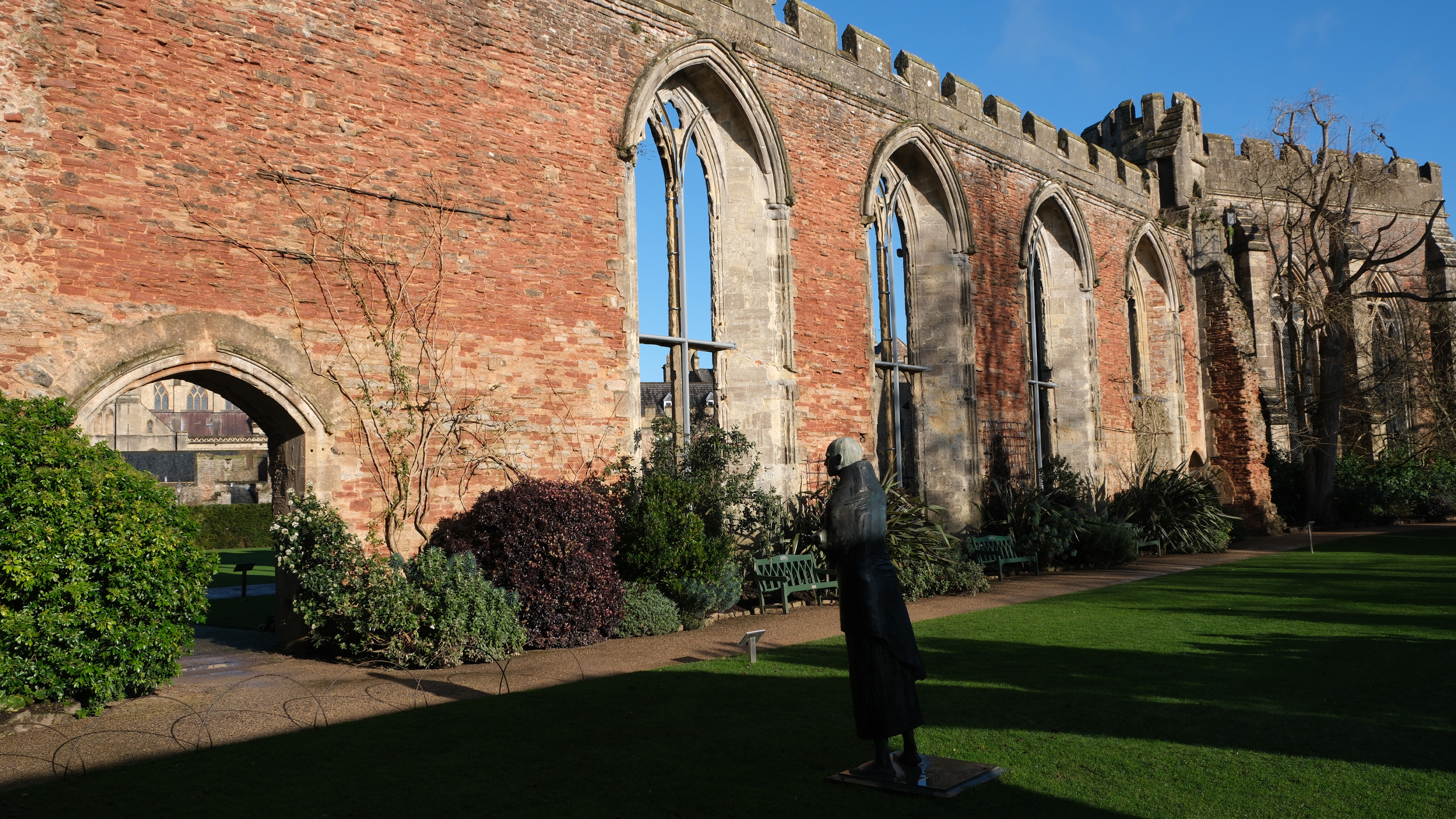Tom's Guide Verdict
The Fujifilm X-T5 looks and feels like an old 35mm film camera, but there’s nothing ‘retro’ about its 40.2 megapixel image sensor, fifth-generation X-Processor 5 engine, and deep-learned AI autofocus. It’s a high-tech, high-performance APS-C format camera with superb handling and fantastic all-round performance.
Pros
- +
High-res 40.2 megapixel image sensor
- +
Tenacious autofocus system
- +
Super-fast shutter speed and drive rates
- +
Intuitive controls
- +
Beautiful design
Cons
- -
Rear touchscreen not fully articulated
- -
No top panel info display
- -
Mediocre high-ISO image quality
- -
Shallow buffers
Why you can trust Tom's Guide
Sensor: 40.2MP APS-C X-Trans CMOS 5
Image processor: X-Processor 5
Image stabilization: 5-axis, up to 7-stops
Autofocus: Intelligent Hybrid AF (contrast/phase-detection)
Viewfinder: 0.5-inch OLED EVF, 3.69 million dots
Display: 3.0-inch Tilt-Type color LCD Touch Screen, 1.84 million dots
ISO: 125-12,800 (expandable to 64-51,200)
Max video resolution: 6.2K at 30p, 25p, 24p
Ports: USB Type-C, Micro HDMI, 3.5mm stereo, 2.5mm remote, hot shoe, sync
Memory: 2x UHS-II SD/SDHC/SDXC
Wireless: Wi-Fi, Bluetooth
Shutter speed: 1/8000s mechanical, 1/180,000s electronic
Shooting speed: 15fps mechanical, 20fps electronic
Battery life (CIPA): 580 shots (740 eco mode)
Size/weight (body + battery/card): 5.1 x 3.6 x 2.5 inches; 19.6 ounces
The Fujifilm XT-5 is, as its name suggests, the fifth-generation X-T model in Fujifilm’s X System line-up of digital cameras. The X-T5 sits just below the range-topping Fujifilm X-H2, and features the same X-Trans CMOS 5 and X-Processor 5 sensor/processor combo. The powerful pairing delivers high-resolution stills at up to 40.2 megapixels along with deep-learned, artificially intelligent autofocus and fast drive rates.
Thanks to its high resolution sensor and IBIS, the X-T5 is a step up from most of Fuji’s relatively small lineup, including the outgoing X-T4, the mid-range X-T30 II and X-S10, and the compact X-E4 and X-Pro 3 street cameras — all of which feature the same 26.1MP X-Trans CMOS 4 sensor.
It’s aimed at enthusiast and professional photographers who want the printing and cropping headspace of a high resolution sensor, plus respectable video capabilities, all in a compact, lightweight body. To find out whether this camera is right for you, read our full Fujifilm X-T5 review.
Fujifilm X-T5 review: Price and availability
The Fujifilm X-T5 is available in silver or black options, and retails for around $1,699 / £1,699. For newcomers to the Fujifilm X system, it’s also available in a pair of kit options, both of which were tested for this review. These kits include either the Fujinon XF 18-55mm f/2.8-4 R LM OIS zoom lens at £2,049/$2,099 or the Fujinon XF 16-80mm f/4 R OIS WR zoom at £2,149/$2,199. The XF 18-55mm offers a zoom range equating to a 27-82.5mm zoom on a full-frame camera, while the XF 16-80mm offers an effective full frame zoom range of 24-120mm.
On the face of it, the pricier kit looks the best value, offering a greater zoom range. However, the 16-80mm lens is comparatively chunky and heavy, and feels a little less well-suited to the compact build of the X-T5.
Fujifilm X-T5 review: Design
The Fujifilm X-T5 follows in the footsteps of its predecessors with a retro design, including three control dials on its top plate along with various other direct-access buttons and switches for important shooting parameters. From a handling perspective, this favors photographers who like to have quick access to creative shooting settings via physical control dials rather than rummaging around in menus.
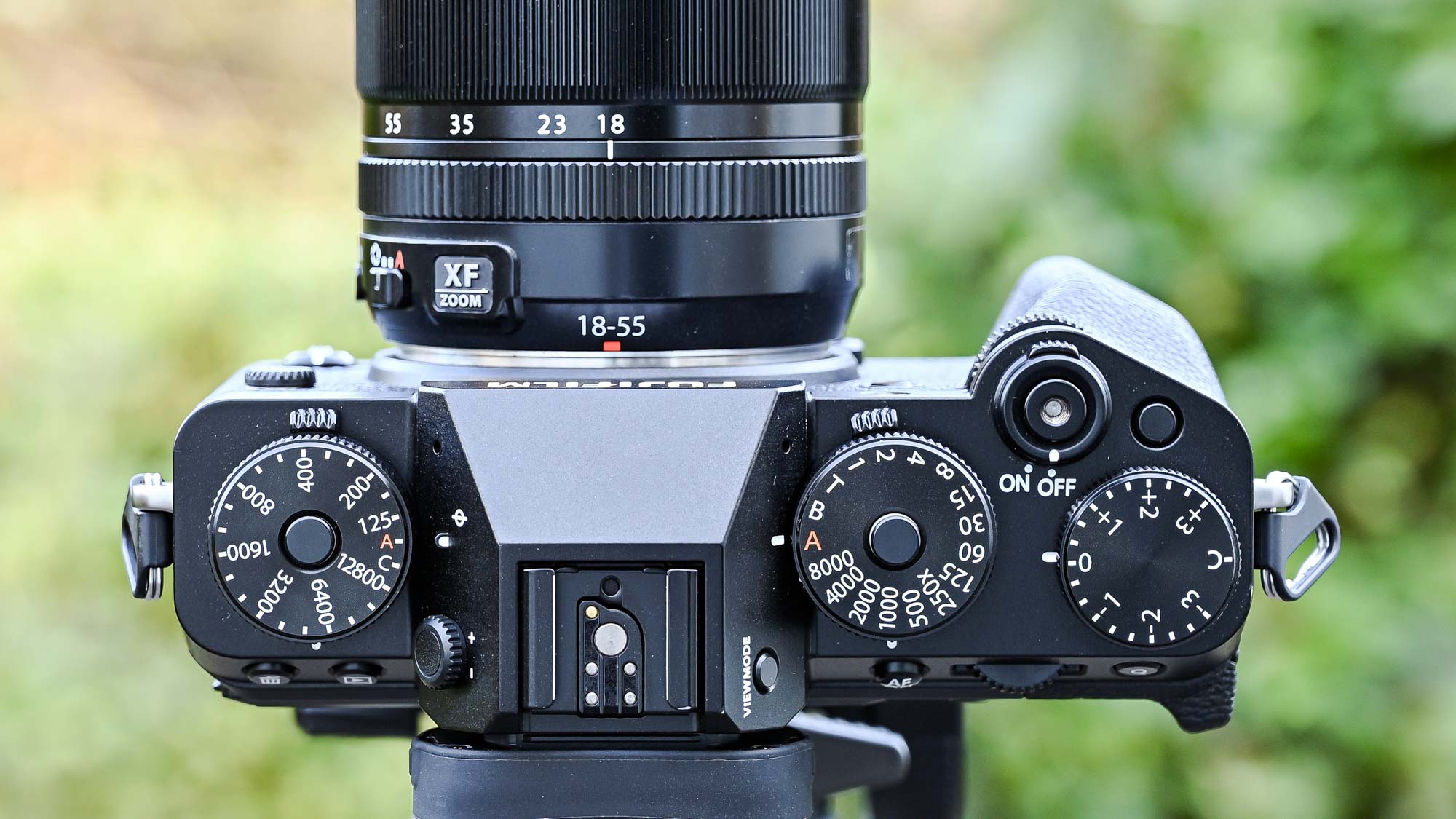
The powerful image sensor, processor and other high-tech features are shoehorned into a surprisingly compact and lightweight body that measures 5.1 x 3.6 x 2.5 inches and weighs in at just 19.6 ounces, complete with battery and memory cards. In conjunction with Fuji’s range of lightweight lenses, the X-T5 is great for photographers who like to travel light or avoid large full-frame camera kit.
Get instant access to breaking news, the hottest reviews, great deals and helpful tips.

Befitting a high-end camera, there are dual card slots supporting UHS-II class SD/SDHC/SDXC memory cards. There are no CFexpress slots, though, as you’d find on the professional X-H2S, skewing the X-T5 clearly towards the enthusiast rather than professional market. Connectivity options are good, including a USB Type-C port, Micro HDMI, 3.5mm stereo mic socket and 2.5mm remote socket. However, there’s no headphone output socket, as featured in the similarly priced and positioned Canon EOS R7. There’s also a flash sync socket in addition to the usual hot-shoe, alongside Wi-Fi and Bluetooth connectivity.
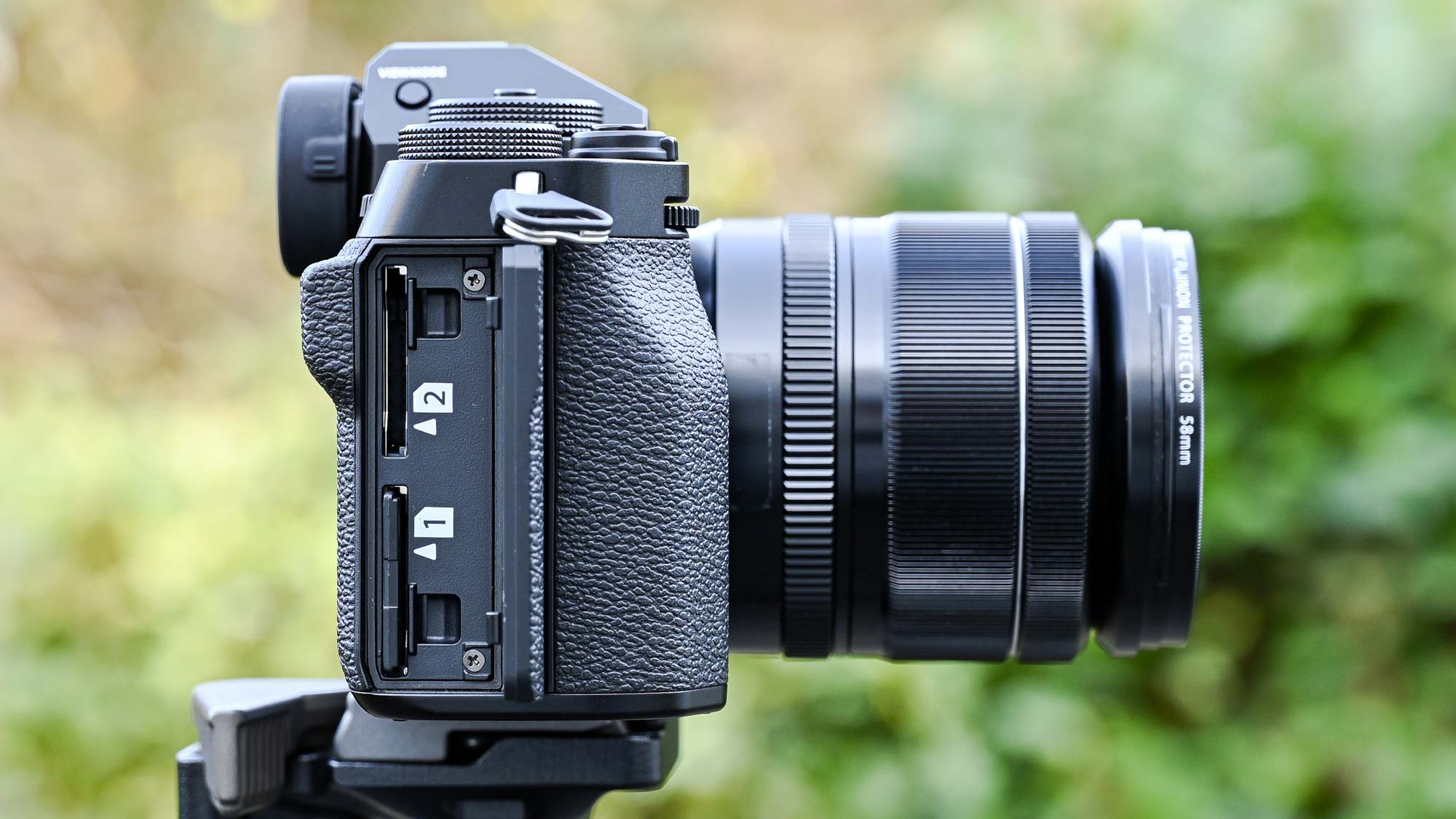
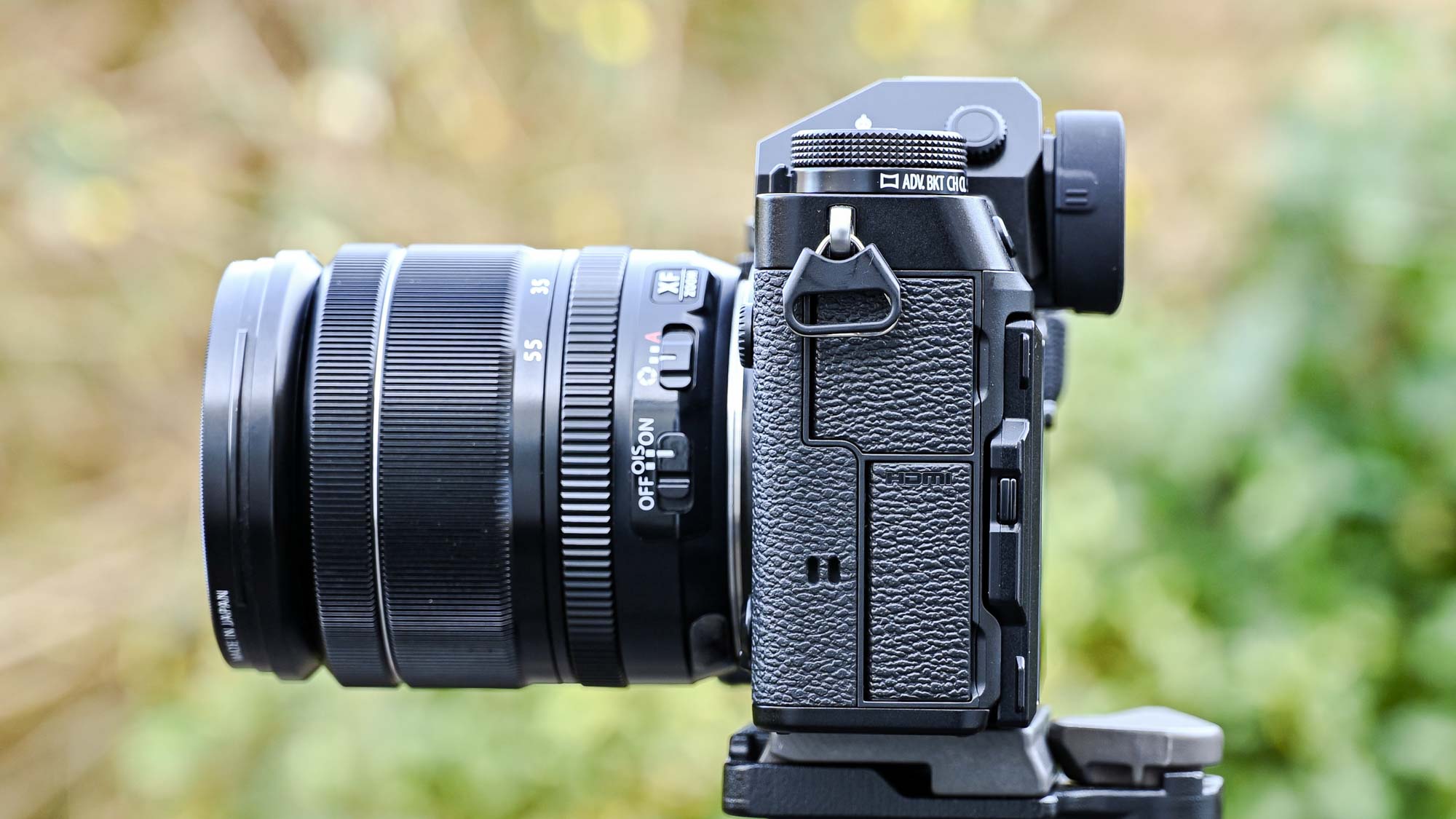
Around the back, there’s a 3.0-inch tilting color LCD touchscreen. It’s a high-res affair with a 1.84 million-dot display and features a 3-way tilting mechanism, for shooting at creative angles in both landscape and portrait orientation, or for shooting around corners.
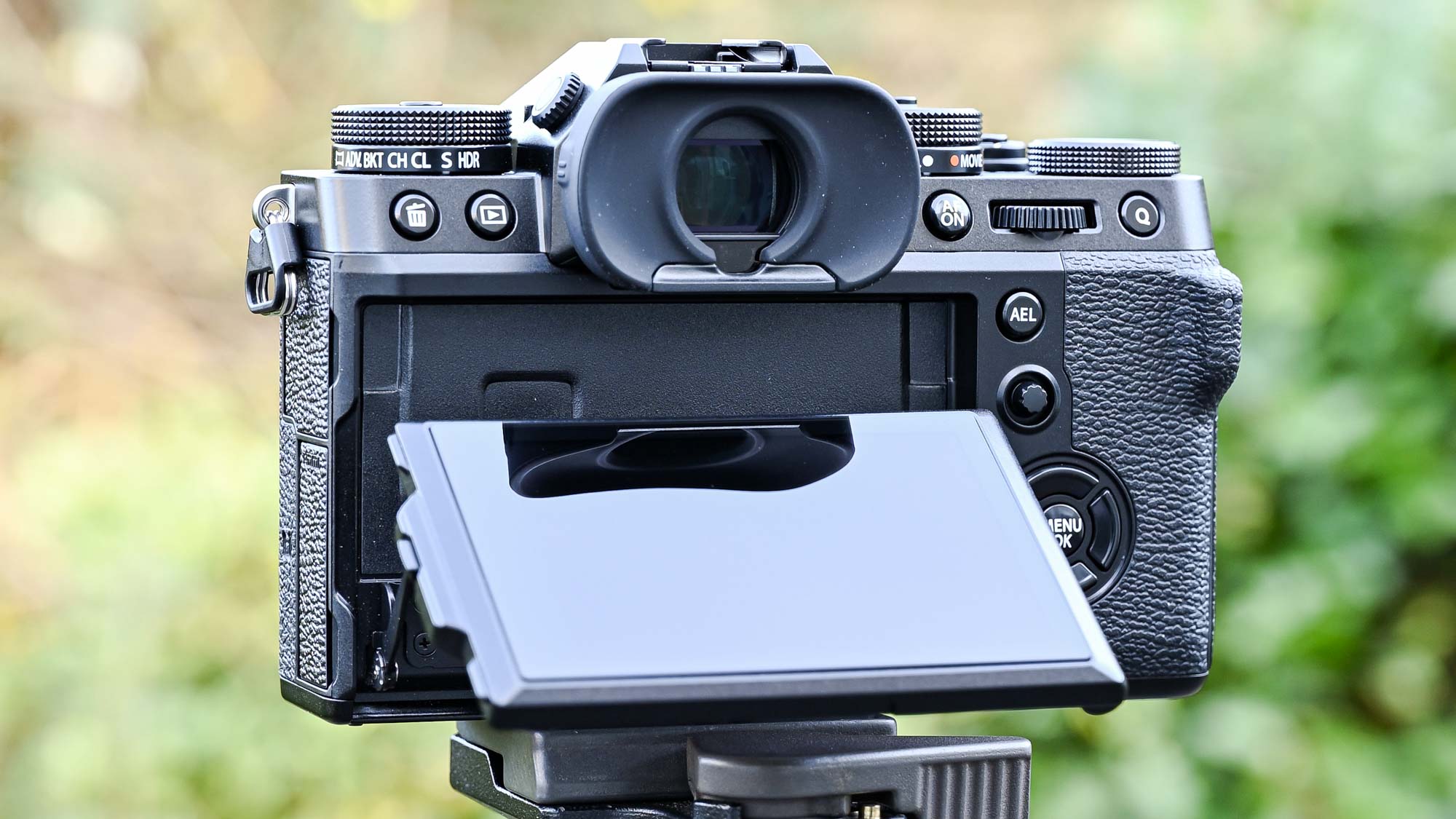
The range of tilt isn’t sufficient to allow you to view the screen from the front of the camera, limiting the X-T5’s ease of use for selfies and vlogging. That isn’t surprising given the market this camera is aimed at, but it was a great feature for videographers to have on the previous X-T4, so it's a shame to not see it on this model.
Fujifilm X-T5 review: Controls
The Fujifilm X-T5’s controls are plentiful and intuitively laid out. There are dedicated ISO, shutter speed and exposure compensation dials on the top plate, plus a total of 11 customizable function buttons and dials that fall neatly under the thumb and fingers for shooting and playback options. The Quick menu adds a further layer of quick-access control, complete with gesture support for the touchscreen. Alternative layouts are also available for the touchscreen, for example enabling a histogram display in playback, or for zooming in to check sharpness.
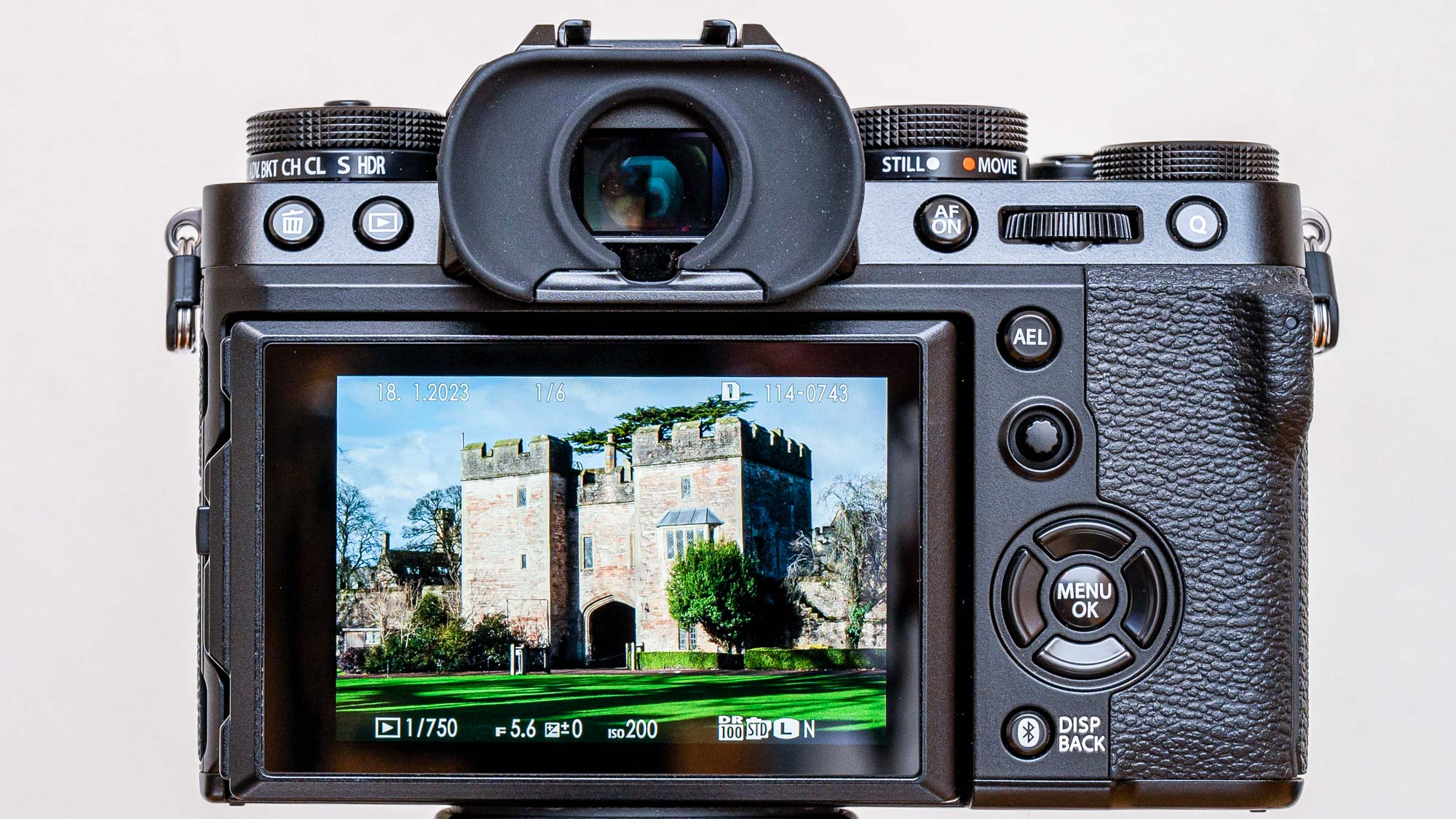
All in all, the controls work really well to give you quick access to wide-ranging shooting functions when you want to get creative. Our only caveat is that the controls need to be handled with care and attention. The ISO and shutter speed dials have pushbuttons in the top that can lock them in place. However, during our testing we found it quite easy to nudge the shooting mode dial and exposure compensation dial to different positions accidentally, especially when popping the camera into a carrying bag or taking it out again.
Fujifilm X-T5 review: Performance
The Fujifilm X-T5 represents years of development and refinement in Fujifilm’s X-Trans CMOS sensors. Their unique color filter array aims for highly detailed image capture along with effective suppression of moire patterning and false color. The X-T5 features the latest, highest-resolution 40.2MP X-Trans CMOS 5 HR sensor, with a back-illuminated design. The electronic circuitry is therefore shifted to the back of the sensor, enabling more room and greater light-gathering potential for the photosites, which equate to each pixel of image capture.
The sensor is coupled to a similarly new fifth-generation X-Processor 5 image processor. It’s not only twice as fast as the previous generation chip, but boasts AI processing technology and support for the recently introduced HEIF image file format, along with a reduction in power consumption. Battery life is good for a mirrorless camera at 580 shots (CIPA rated), rising to 740 shots in Eco shooting mode.
The Fujifilm X-T5 is impressively fast for a camera with such a high megapixel count. The maximum continuous drive rate tops out at 15fps when using the mechanical shutter, and 20fps if you switch to the electronic shutter option. However, buffer depth is rather less generous than with Fujifilm’s flagship H-X2 camera, thanks to that camera’s CFexpress ports. It looks pretty good on paper, with sufficient capacity for bursts of up to 168 JPEGs and 72 RAW Compressed shots in electronic mode, and 119 JPEGs and 39 RAW with the mechanical shutter at these drive speeds. But when shooting in RAW mode at the highest drive rates, you can run out of buffer capacity in little more than a second. Shutter speeds are nevertheless rapid, with up to 1/8000th of a second available for the mechanical shutter and a blistering 1/80,000th in electronic shutter mode.
Well suited to sports, action and wildlife photography, the X-T5 boasts an autofocus system which Fuji state can autofocus in just 1/50th of a second. It’s based on deep-learned AI, so it’s pre-programmed to ‘recognize’ and track different subjects, including animals, birds, cars, motorcycles, airplanes and trains. You can select what you want to track in the autofocus menu, and the system works quickly and with high levels of precision, accuracy and dependability.
Deep-learned AI is also utilized in Auto White Balance, so that the camera can recognize scenes lit by warm artificial lighting and react accordingly to give natural looking results, as borne out in our tests. To save on editing time, there’s also a Smooth Skin Effect on offer, which recognizes human skin and can smooth out skin tones automatically.
Trick modes include an HDR (High Dynamic Range) shooting mode and Pixel Shift Multi-Shot mode, the latter effectively quadrupling the pixel count for images to 160 megapixels. For enhanced dynamic range in regular shooting, the Auto Dynamic Range option works well to retain detail in very bright highlights and very dark shadows within a scene. You can boost this further by using the HEIF file format, which increases color depth from the 8-bit of JPEGs to 10-bit, despite a reduction in data size. That rises to 14-bit color depth in RAW quality mode.
When light levels are low, the X-T5 helps out with 5-axis IBIS (In Body Image Stabilization). We found this to give a 4- to 5-stop benefit in low-light shooting with slow shutter speeds, although Fujifilm claims an effectiveness of up to 7-stops with certain lenses, including the Fujinon XF35mm F1.4 R.
The native ISO range stretches from ISO 125-12,800 and is expandable to ISO 64-51,200, which isn’t overly generous by the latest standards. Even though the image sensor has a back-illuminated design, something has to give when you’re cramming 40.2 megapixels onto an APS-C format sensor. Even so, the X-T5 fares well against other recent APS-C format cameras for high ISO signal-to-noise performance, including the 32.5 megapixel Canon EOS R7.
In practice, we found that in-camera high-ISO noise reduction helped to give fairly clean looking JPEGs without much luminance or chrominance noise, but at the expense of a significant loss of fine detail and texture, due to the smoothing effect of the noise suppression. As expected, the X-T5 loses out to most full-frame cameras for the retention of fine detail with reduced noise at high ISO settings.
Fujifilm has woven its 85 years of experience in making photographic film into its digital cameras from the get-go, and the X-T5 follows suit with 19 film simulation modes on offer. Classics include the natural Provia; the vivid and landscape-friendly Velvia; the soft and dreamy Astia; the grainy black & white Acros and many more besides.


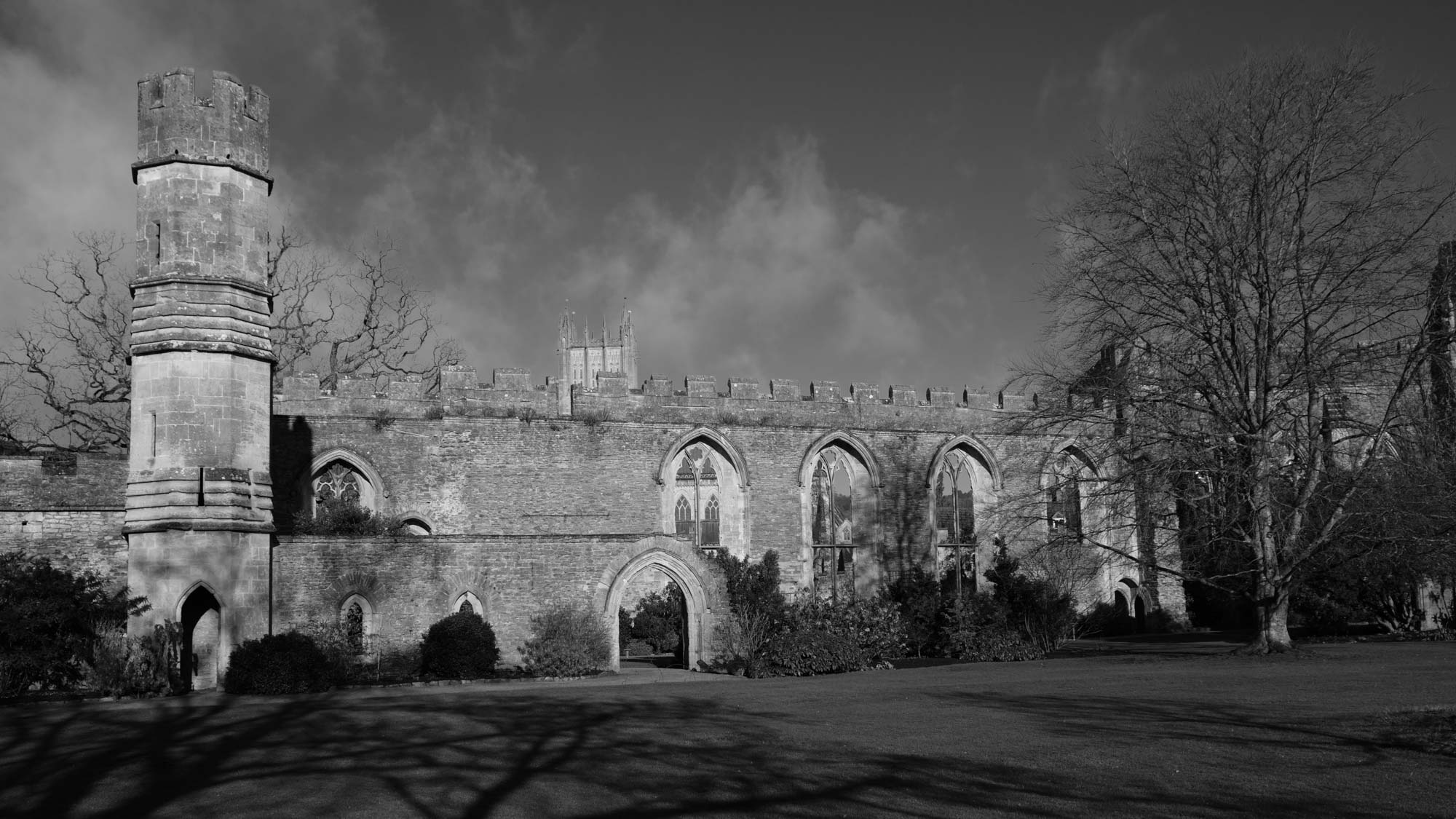
They evoke the look and feel of yesteryear film photography very effectively and, coupled with accurate metering and good dynamic range, enable great results straight off the camera without the need for extensive post-processing.
Fujifilm X-T5 review: Video
The Fujifilm X-T5 is designed and built primarily as a stills camera, but it’s more than capable for shooting movies. For lightweight standalone filming, it can capture 10-bit 4:2:2 video at up to 6.2K 16:9 at 29.97p/25p/24p/23.98p direct to an inserted SD card. It also features F-Log2 for enhanced tonality and greater freedom in post-production. 4K UHD 16:9 and 17:9 options are available at 59.94p/50p/29.97p/25p/24p/23.98p. Downsize to 1080p Full HD resolution and you get an additional 240p slow-mo option.
Well connected for more advanced video capture, the X-T5 is directly compatible with external recording devices, including the ATMOS NINJA V+ and Blackmagic Design’s Video Assist 12G, via its HDMI port. Additional options include the capture of 12-bit RAW video output in Apple ProRes RAW or Blackmagic RAW at up to 6K/30p.
The lack of a fully-articulated rear screen with a front-facing option limits the X-T5’s suitability for vlogging but, in fairness, that’s not what this camera is designed for.
Fujifilm X-T5 review: Verdict
The Fujifilm X-T5 is a lovable camera. It’s compact and lightweight yet sturdy and weather-resistant, making it a travel-friendly companion for walkabout photography. The fifth-generation 40.2MP image sensor and processing engine deliver superb image quality, with excellent retention of fine detail and impressive dynamic range at low to medium ISO settings, maintaining detail in very dark shadows right through to really bright highlights.
The small build, plentiful direct-access controls and highly effective in-body image stabilization make the X-T5 a perfect fit for professional and enthusiast photographers on the go, who want lightweight kit without compromising on image quality and all-round performance. The film simulation modes help with getting everything from flattering portraits to vivid landscape images, straight off the camera. While its shallow buffers may limit its usefulness in the eyes of professional action, sports and wildlife photographers, the X-T5’s capable autofocus, super-fast shutter speeds and high drive rates still make it more than capable of enthusiast-level photography in those genres. Ultimately, if you want a small camera that goes large on megapixels, image quality and all-round performance, the X-T5 will suit you down to the ground.

Matthew Richards’ passion for photography began as a child, learning from his father who was an acclaimed architectural, commercial, industrial and portrait photographer. Matthew qualified as an electronics engineer and began his career working for the BBC in the 1980s, testing, installing and repairing broadcast studio equipment. In the early 1990’s he switched to journalism and was employed as a feature writer, reviews writer and editor-in-chief at Future Publishing in the UK, working mainly on computing and technology magazines.
In 2001, Matthew Richards went freelance, pursuing his passion for photography and working on assignments in locations across the UK, as well as in the USA, Mauritius, Malaysia and China. Technical journalism still plays a major part in Matthew’s freelance career and he has been commissioned to write countless reviews and group tests of cameras, lenses and other photographic accessories over the last 20 years, for leading photography magazines including Digital Camera, Digital Photographer, N-Photo and PhotoPlus, as well as for a number of photographic websites.


